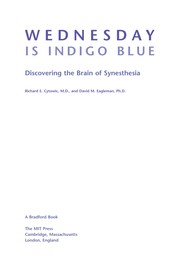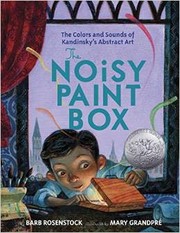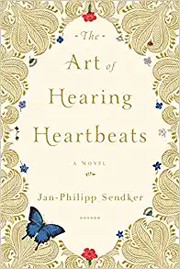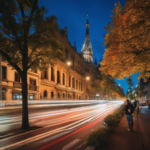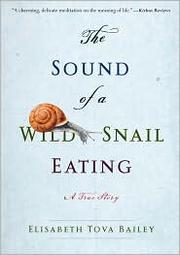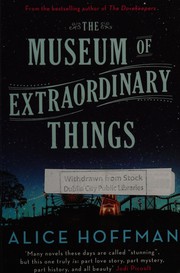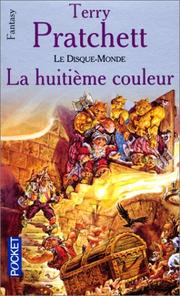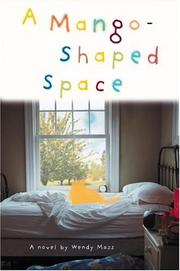If you’re fascinated by the concept of synesthesia or are looking to better understand this intriguing neurological phenomenon, then you’ll love diving into the world of synesthesia through the pages of a book on synesthesia. Whether you experience synesthesia yourself or are simply curious about how the blending of senses can shape our perception of the world, these synesthesia books offer a captivating exploration of this unique condition. From personal accounts to scientific insights, the 20 best books about synesthesia bring this extraordinary sensory experience to life in vivid detail, making for a truly enlightening and immersive reading experience.
Contents
- 1 20 Best Synesthesia Books
- 2 The Man Who Tasted Shapes
- 3 Wednesday Is Indigo Blue
- 4 The Synesthesia Book
- 5 The Hidden Sense: Synesthesia in Art and Science
- 6 The Tell-Tale Brain
- 7 Musicophilia
- 8 The Electric Woman: A Memoir in Death-Defying Acts
- 9 The Noisy Paint Box
- 10 The Invisible Gorilla
- 11 The Art of Hearing Heartbeats
- 12 The Sound of a Wild Snail Eating
- 13 The Museum of Extraordinary Things
- 14 The Color of Magic
- 15 The Perfume Collector
- 16 The Secret Lives of Color
- 17 The Glass Universe
- 18 The Immortal Life of Henrietta Lacks
- 19 Wednesday Is Indigo Blue: Discovering the Brain of Synesthesia
- 20 The Tell-Tale Brain: A Neuroscientist’s Quest for What Makes Us Human
- 21 A Mango-Shaped Space
- 22 Final Thoughts on Best Synesthesia Books
- 23
20 Best Synesthesia Books
The Man Who Tasted Shapes
by Richard E. Cytowic
The Man Who Tasted Shapes by Richard E. Cytowic is a captivating exploration of the fascinating neurological phenomenon known as synesthesia. In this thought-provoking book, Cytowic delves into the experiences of individuals who possess this unique ability to perceive the world in a way that is truly extraordinary. Through vivid storytelling and scientific insights, the author brings to life the remarkable stories of synesthetes who can taste words, see colors in music, or perceive shapes with their sense of touch.
With a blend of personal anecdotes and in-depth research, The Man Who Tasted Shapes offers readers a window into the mysterious and wondrous world of synesthesia. Cytowic’s engaging prose and profound understanding of the subject make this book a must-read for anyone interested in the complexities of human perception. Whether you’re a psychology enthusiast, a science buff, or simply curious about the extraordinary ways in which our brains can perceive the world, this book about synesthesia is sure to captivate and enlighten you.
Wednesday Is Indigo Blue
by Richard E. Cytowic and David Eagleman
Wednesday Is Indigo Blue is a captivating and enlightening book about synesthesia, the fascinating neurological condition where the senses become intertwined. Written by Richard E. Cytowic and David Eagleman, this book delves into the experiences of synesthetes, providing vivid descriptions of their unique perceptions of the world. Through a combination of scientific research and personal anecdotes, the authors explore the complexities of synesthesia, shedding light on the ways in which individuals with this condition perceive colors, sounds, and even emotions in a way that is truly extraordinary.
Readers will be drawn into the world of synesthesia as they learn about the different forms of this sensory phenomenon and its impact on the lives of those who experience it. With its accessible and engaging writing style, Wednesday Is Indigo Blue is a must-read for anyone interested in the intriguing intersection of neuroscience and human perception. This book about synesthesia will leave readers with a deeper understanding and appreciation for the diversity of human sensory experience.
The Synesthesia Book
by Cretien van Campen
The Synesthesia Book by Cretien van Campen is a fascinating exploration of the sensory phenomenon known as synesthesia. This groundbreaking book delves into the experiences of individuals who have synesthesia, a condition where the stimulation of one sensory pathway leads to automatic, involuntary experiences in another pathway. Van Campen provides a comprehensive overview of the history, neuroscience, and psychology of synesthesia, offering a deeper understanding of this unique perceptual experience.
Through the use of case studies and personal accounts, the author illustrates the diverse ways in which synesthetic individuals perceive the world around them, from seeing colors when they hear music to tasting flavors when they read words. The Synesthesia Book invites readers to consider the implications of synesthesia for our understanding of perception, cognition, and creativity.
Whether you are new to the concept of synesthesia or have a keen interest in the subject, this book about synesthesia is a captivating and thought-provoking read that will broaden your knowledge and appreciation of the human sensory experience.
The Hidden Sense: Synesthesia in Art and Science
by Cretien van Campen
The Hidden Sense: Synesthesia in Art and Science by Cretien van Campen is a fascinating exploration of the phenomenon of sensory blending, where one sensory experience can trigger another. This captivating book delves into the world of synesthesia, revealing how individuals with this unique condition perceive the world in a way that is far beyond the ordinary. Van Campen expertly weaves together the art and science of synesthesia, drawing on a range of disciplines to provide a comprehensive understanding of this intriguing sensory phenomenon. Through a combination of case studies, historical insights, and artistic interpretations, the author offers readers a rich and immersive journey into the hidden senses of synesthesia.
The Tell-Tale Brain
by V.S. Ramachandran
The Tell-Tale Brain by V.S. Ramachandran delves into the fascinating world of neurology and the complexities of the human brain. This captivating book explores various neurological conditions and phenomena, including synesthesia, which is a condition where the stimulation of one sensory pathway leads to automatic experiences in a second sensory pathway. Ramachandran provides a comprehensive overview of the brain’s inner workings and how it shapes our perceptions, thoughts, and behaviors.
Through engaging storytelling and insightful analysis, the author takes readers on a journey to understand the mysteries of the mind and the ways in which it can play tricks on us. With a blend of science and real-life case studies, The Tell-Tale Brain offers a thought-provoking exploration of the brain’s capacity for creativity, perception, and even self-deception. Whether you’re a neuroscience enthusiast or simply curious about the inner workings of the human mind, this book is sure to captivate and enlighten with its in-depth exploration of the complexities of the brain and its role in shaping our experiences and understanding of the world.
Musicophilia
by Oliver Sacks
Musicophilia, written by Oliver Sacks, is a captivating exploration of the relationship between the human brain and music. In this thought-provoking book, Sacks delves into the fascinating world of how music affects the brain, examining various neurological conditions such as amusia, musical hallucinations, and hypermusia. Through a combination of scientific research, case studies, and personal anecdotes, Sacks provides a comprehensive understanding of how music can deeply impact individuals with neurological disorders, as well as those with typical brain function.
By delving into the intricate connections between the brain and music, Sacks sheds light on the profound ways in which music can influence our emotions, memories, and even our sense of self. This book is a must-read for anyone interested in the extraordinary power of music, as well as for those fascinated by the intersection of neuroscience and the arts. With its engaging storytelling and insightful analysis, Musicophilia offers a unique and compelling perspective on the remarkable phenomenon of music’s effect on the human brain.
The Electric Woman: A Memoir in Death-Defying Acts
by Tessa Fontaine
The Electric Woman: A Memoir in Death-Defying Acts by Tessa Fontaine is a captivating and exhilarating memoir that takes readers on a journey through the author’s experience with her own unique form of sensory perception. The book chronicles Fontaine’s time as a performer in a sideshow and her exploration of the boundaries between life and death. Throughout the memoir, Fontaine delves into her personal struggles and triumphs, offering an intimate look at her experiences with synesthesia, a condition that blurs the lines between the senses. Through her vivid and evocative prose, Fontaine invites readers to step into her world and witness the electrifying connections she makes between her experiences and her synesthetic perceptions. The Electric Woman is a mesmerizing and thought-provoking read that will leave readers spellbound and inspired by Fontaine’s daring and unapologetic exploration of her extraordinary sensory experiences.
The Noisy Paint Box
by Barb Rosenstock
The Noisy Paint Box by Barb Rosenstock is a captivating picture book about synesthesia, a condition where one sensory experience triggers another, such as seeing colors when hearing music. The story follows the life of the famous abstract artist Wassily Kandinsky, who experienced synesthesia. As a child, Kandinsky’s world was filled with a symphony of colors and sounds, which he struggled to express until he discovered painting. The vibrant illustrations by Mary GrandPré bring Kandinsky’s colorful world to life, making it a feast for the eyes as well as the mind. Through Kandinsky’s journey, readers will be inspired by his unique way of seeing and creating art, and they will learn about the power of embracing one’s differences and finding one’s own creative voice. This book about synesthesia is a celebration of creativity, individuality, and the beauty of the world as seen through the eyes of an artist with a remarkable gift.
The Invisible Gorilla
by Christopher Chabris and Daniel Simons
The Invisible Gorilla by Christopher Chabris and Daniel Simons is a fascinating exploration of the ways our minds can deceive us. The book delves into the concept of inattentional blindness, illustrating how our brains can miss important details when our attention is focused elsewhere. Through a series of captivating experiments and real-life examples, the authors reveal the surprising ways in which our perceptions can be distorted, leading us to overlook even the most obvious things.
This thought-provoking book challenges readers to question their own assumptions about the world around them and offers valuable insights into the workings of the human mind. The Invisible Gorilla is a captivating read that sheds light on the complexities of perception and cognition, leaving readers with a newfound understanding of the limitations of their own awareness. Whether you’re a psychology enthusiast or simply curious about the intricacies of the human brain, this book is a must-read for anyone interested in unraveling the mysteries of the mind.
The Art of Hearing Heartbeats
by Jan-Philipp Sendker
The Art of Hearing Heartbeats by Jan-Philipp Sendker is a captivating book about synesthesia that tells the story of a young woman named Julia who travels to Myanmar in search of her missing father. There, she meets a mysterious man named U Ba who shares an extraordinary tale of love, loss, and the power of the human heart.
As Julia becomes enthralled in U Ba’s story, she discovers the mystical ability to hear heartbeats and see the world in a whole new light. Through rich and lyrical prose, Sendker weaves an enchanting tale of love that transcends time and space, and the extraordinary connections that bind us all together.
This book on synesthesia is a poignant and beautifully written exploration of the human experience, and it will leave readers spellbound with its vivid imagery and profound insights into the nature of love and perception. The Art of Hearing Heartbeats is a must-read for anyone who enjoys a thought-provoking and deeply moving synesthesia book.
The Sound of a Wild Snail Eating
by Elisabeth Tova Bailey
The Sound of a Wild Snail Eating by Elisabeth Tova Bailey is a captivating exploration of the author’s experience with chronic illness and her unexpected connection to a wild snail. This poignant memoir offers a unique perspective on the natural world and the healing power of nature. Through her observations of the snail, Bailey delves into themes of resilience, patience, and the delicate balance of life. The book is a beautiful meditation on the small wonders of the world and the profound impact they can have on our lives.
As Bailey navigates her own physical limitations, she finds solace and companionship in the presence of the snail, leading to a deeper understanding of the interconnectedness of all living beings. The book offers a thought-provoking reflection on the human experience and the ways in which we can find beauty and meaning even in the most unexpected places. The Sound of a Wild Snail Eating is a powerful reminder of the power of observation and the potential for healing through a deeper connection with nature.
The Museum of Extraordinary Things
by Alice Hoffman
The Museum of Extraordinary Things by Alice Hoffman is a captivating historical novel set in early 20th century New York City. The story follows the lives of two extraordinary individuals: Coralie, the daughter of the enigmatic owner of a museum of oddities, and Eddie, a young immigrant photographer with his own troubled past. As they navigate the harsh realities of their respective worlds, their paths eventually intersect in unexpected ways.
At its core, The Museum of Extraordinary Things is a captivating tale of love, loss, and the search for identity. It also delves into the theme of synesthesia, a condition where the senses are intertwined, adding an extra layer of depth and intrigue to the narrative. Hoffman’s lyrical prose and vivid descriptions bring the setting and characters to life, making it a truly immersive reading experience.
With its rich historical backdrop and compelling characters, The Museum of Extraordinary Things is a must-read for anyone looking for a mesmerizing story that seamlessly weaves together romance, mystery, and a touch of the extraordinary.
The Color of Magic
by Terry Pratchett
The Color of Magic by Terry Pratchett is a fantastical and humorous novel that takes readers on a wild ride through the Discworld, a flat disc balanced on the backs of four elephants, which in turn stand on the back of a giant turtle. The story follows Rincewind, a failed student at the Unseen University of wizardry, and Twoflower, a naive tourist with a penchant for taking pictures of everything, as they embark on a series of misadventures across the Discworld. Along the way, they encounter strange creatures, powerful magic, and perilous situations that keep readers on the edge of their seats.
Pratchett’s wit and clever storytelling make The Color of Magic a delightful and entertaining read for fans of fantasy and adventure. The author’s vivid descriptions and imaginative world-building create a rich and immersive reading experience that will appeal to anyone looking for an escape into a wondrous and unpredictable realm. With its colorful and vibrant narrative, this book on synesthesia is sure to captivate readers from start to finish.
The Perfume Collector
by Kathleen Tessaro
The Perfume Collector by Kathleen Tessaro is a captivating novel that leads readers on a journey through the world of scents, secrets, and synesthesia. The story follows a young socialite, Grace Monroe, who unexpectedly inherits a fortune from a mysterious stranger. As she delves into the enigmatic woman’s past, Grace discovers a world filled with intrigue, passion, and the power of scent. The novel weaves together the lives of two women, exploring their connections to perfume and the emotions it evokes.
With vivid descriptions and a compelling plot, The Perfume Collector is a mesmerizing exploration of the intertwined lives of its characters. Tessaro’s rich prose allows readers to experience the world through the senses, creating a vivid and immersive reading experience. This is a must-read for anyone fascinated by the power of scent and its ability to evoke memories and emotions. The Perfume Collector is a true gem for anyone looking for a captivating story that explores the complexities of human connection and the sensory experience.
The Secret Lives of Color
by Kassia St. Clair
The Secret Lives of Color by Kassia St. Clair is a mesmerizing exploration of the hidden histories and cultural significance of 75 different shades. This captivating book delves into the fascinating stories behind the colors we encounter in our everyday lives, revealing the surprising and often bizarre tales that have shaped our perception of them. From the rare and expensive pigments used by Renaissance artists to the synthetic dyes that revolutionized the fashion industry, St. Clair’s vivid storytelling brings each color to life in a way that will leave readers seeing the world in a whole new light.
With a keen eye for detail and a passion for storytelling, St. Clair takes readers on a journey through the vibrant and often mysterious world of color. Whether you’re an artist, a history buff, or simply someone who has always been curious about the world around you, this book is sure to delight and inspire. The Secret Lives of Color is a must-read for anyone who has ever wondered about the hidden meanings and secret histories behind the colors that surround us every day.
The Glass Universe
by Dava Sobel
The Glass Universe by Dava Sobel is a captivating non-fiction book that delves into the remarkable contributions of a group of women known as “human computers” at the Harvard College Observatory in the late 19th and early 20th centuries. These women, with their exceptional attention to detail and dedication, meticulously cataloged and analyzed the vast amounts of astronomical data collected by the observatory. Sobel skillfully weaves together the personal stories of these trailblazing women with the scientific discoveries they made, providing a fascinating glimpse into their world and the impact they had on the field of astronomy.
Through vivid storytelling and meticulous research, Sobel brings to life the world of these pioneering women, shedding light on their struggles, triumphs, and the lasting legacy they left behind. The Glass Universe is a captivating exploration of the intersection of science, history, and gender, and is a must-read for anyone interested in the history of astronomy and the remarkable individuals who shaped our understanding of the cosmos.
The Immortal Life of Henrietta Lacks
by Rebecca Skloot
The Immortal Life of Henrietta Lacks by Rebecca Skloot is a captivating nonfiction book that delves into the story of Henrietta Lacks, a woman whose cells were unknowingly taken for medical research in the 1950s. These cells, known as HeLa cells, have been instrumental in numerous scientific breakthroughs, including the development of the polio vaccine and advancements in cancer research. Skloot skillfully weaves together the history of Henrietta’s cells with the personal story of her family, exploring the ethical implications of using a person’s cells without their consent.
This book is a compelling blend of scientific discovery, medical ethics, and the impact of one woman’s cells on the world. Skloot’s writing is engaging and accessible, making the complex scientific concepts easy to understand. The Immortal Life of Henrietta Lacks is a thought-provoking exploration of the intersection of science, ethics, and human rights, and it sheds light on the often overlooked contributions of marginalized individuals to medical advancement. This book is a must-read for anyone interested in the intersection of medical science and human experience.
Wednesday Is Indigo Blue: Discovering the Brain of Synesthesia
by Richard E. Cytowic, David M. Eagleman
Wednesday Is Indigo Blue: Discovering the Brain of Synesthesia is a fascinating and insightful book about synesthesia, a neurological phenomenon where the senses blend together, allowing individuals to experience the world in a unique and extraordinary way. Written by Richard E. Cytowic and David M. Eagleman, this book delves into the mysterious workings of the brain and explores the colorful and vivid experiences of those with synesthesia.
The authors take readers on a captivating journey through the history, science, and personal stories of synesthetes, shedding light on the complexities of this condition and its profound impact on perception and creativity. Through engaging storytelling and scientific exploration, Wednesday Is Indigo Blue provides a thought-provoking exploration of the brain’s incredible ability to perceive the world in ways that go beyond the ordinary.
Whether you’re a neuroscience enthusiast, a psychology buff, or simply curious about the wonders of the human mind, this synesthesia book offers a compelling and enlightening read that will broaden your understanding of the brain’s remarkable capabilities.
The Tell-Tale Brain: A Neuroscientist’s Quest for What Makes Us Human
by V.S. Ramachandran
The Tell-Tale Brain: A Neuroscientist’s Quest for What Makes Us Human by V.S. Ramachandran is a captivating exploration of the human brain and its intricate workings. Ramachandran, a renowned neuroscientist, delves into the fascinating world of the mind, offering insights into the complexities of human perception, behavior, and consciousness.
This compelling book delves into the mysteries of the brain, tackling topics such as perception, synesthesia, and the nature of consciousness. Ramachandran’s engaging storytelling and in-depth research make The Tell-Tale Brain a must-read for anyone interested in understanding the complexities of the human mind.
With a blend of scientific expertise and compelling anecdotes, Ramachandran takes readers on a journey through the inner workings of the brain, offering a fresh perspective on what truly makes us human. Whether you’re a neuroscience enthusiast or simply curious about the mysteries of the mind, The Tell-Tale Brain is sure to captivate and enlighten with its profound insights into the human experience.
A Mango-Shaped Space
by Wendy Mass
A Mango-Shaped Space by Wendy Mass is a captivating book about synesthesia, a rare neurological condition where one’s senses are blended, causing them to perceive the world in a unique and colorful way. The story follows 13-year-old Mia, who sees colors and shapes associated with letters, numbers, and sounds. While she tries to keep her condition a secret, she must navigate the challenges of school, friendship, and family while coming to terms with her extraordinary ability. As Mia learns to embrace her synesthetic experiences, she also discovers the true meaning of acceptance, friendship, and self-discovery.
This beautifully written and heartwarming novel takes readers on a journey of understanding and empathy, as they explore the world through Mia’s eyes. With its rich and vivid descriptions, A Mango-Shaped Space offers a thought-provoking and enlightening perspective on the human experience. It’s a must-read for anyone interested in exploring the complexities of the mind and the beauty of our unique perceptions.
Final Thoughts on Best Synesthesia Books
In conclusion, these 20 best books about Synesthesia offer a fascinating exploration of the unique sensory experiences of individuals with this condition. From personal accounts to scientific studies, these books shed light on the complex interplay between perception and cognition. Whether you are interested in understanding synesthesia or simply curious about the extraordinary ways in which our brains function, these books are sure to captivate and enlighten.
Which book about Synesthesia is best?
The best book on Synesthesia can vary with personal preference, but three widely recommended titles are:
- The Man Who Tasted Shapes by Richard E. Cytowic,
- Wednesday Is Indigo Blue by Richard E. Cytowic and David Eagleman,
- The Synesthesia Book by Cretien van Campen.
Each offers valuable insights and could be a great starting point.
What are the best books to learn about Synesthesia?
For those looking to learn about Synesthesia, there is a wealth of literature that can provide a comprehensive understanding of the subject. Some of the most highly recommended books include:
- The Man Who Tasted Shapes by Richard E. Cytowic,
- Wednesday Is Indigo Blue by Richard E. Cytowic and David Eagleman,
- The Synesthesia Book by Cretien van Campen,
- The Hidden Sense: Synesthesia in Art and Science by Cretien van Campen,
- The Tell-Tale Brain by V.S. Ramachandran,
- Musicophilia by Oliver Sacks,
- The Electric Woman: A Memoir in Death-Defying Acts by Tessa Fontaine,
- The Noisy Paint Box by Barb Rosenstock,
- The Invisible Gorilla by Christopher Chabris and Daniel Simons,
- The Art of Hearing Heartbeats by Jan-Philipp Sendker
These books offer a range of perspectives on Synesthesia, covering various aspects and approaches to the subject.
What are the best books about Synesthesia?
The best books about Synesthesia are:
- The Man Who Tasted Shapes by Richard E. Cytowic,
- Wednesday Is Indigo Blue by Richard E. Cytowic and David Eagleman,
- The Sound of a Wild Snail Eating by Elisabeth Tova Bailey,
- The Museum of Extraordinary Things by Alice Hoffman,
- The Noisy Paint Box by Barb Rosenstock,
- Musicophilia by Oliver Sacks.
Each offers unique insights into the subject. While these books about Synesthesia are highly regarded, it’s important to note that any list of ‘best’ books is subjective and reflects a range of opinions.
What are the best Synesthesia books of all time?
Choosing the best Synesthesia books of all time can vary depending on who you ask, but five titles that are often celebrated include
- The Man Who Tasted Shapes by Richard E. Cytowic,
- Wednesday Is Indigo Blue by Richard E. Cytowic and David Eagleman,
- The Tell-Tale Brain by V.S. Ramachandran,
- The Noisy Paint Box by Barb Rosenstock,
- and The Sound of a Wild Snail Eating by Elisabeth Tova Bailey.
Each of these books has made a significant impact in the field of Synesthesia and continues to be influential today.


